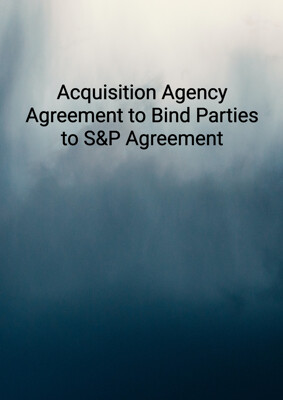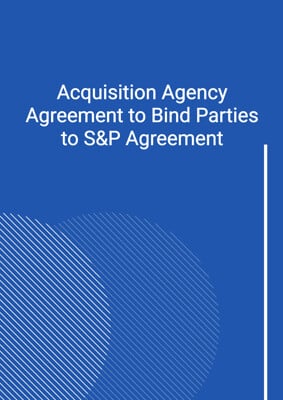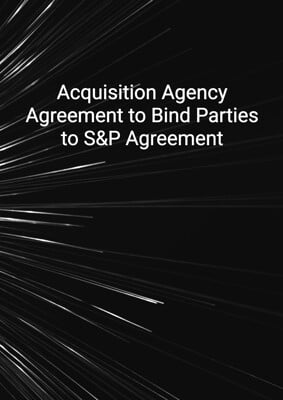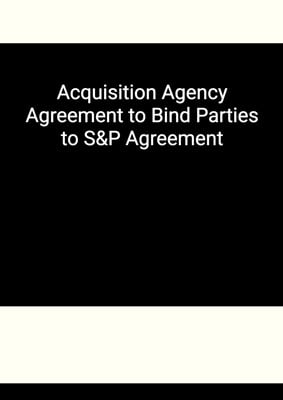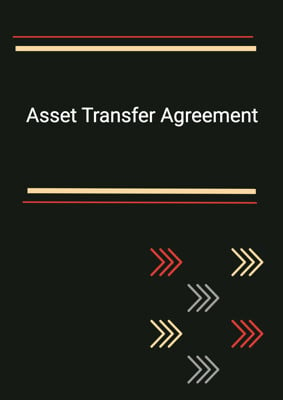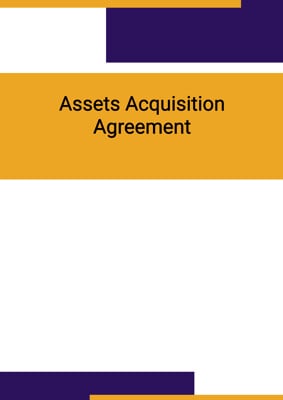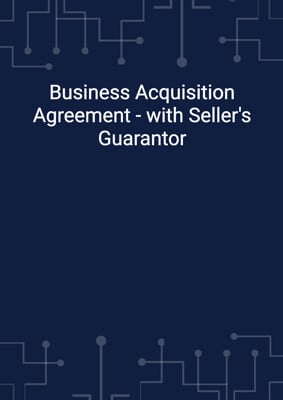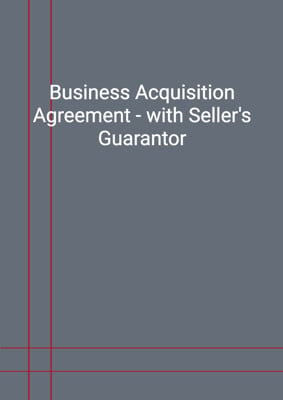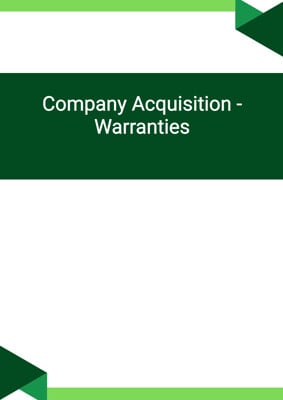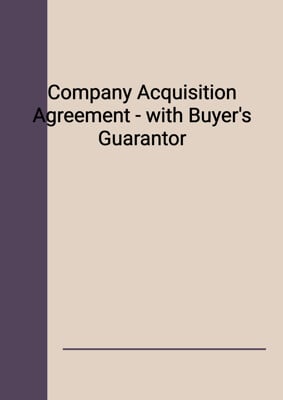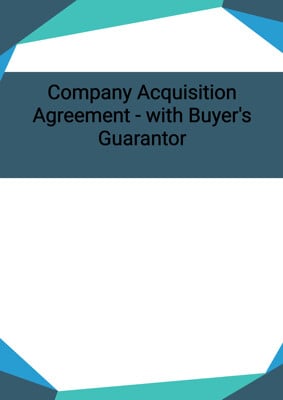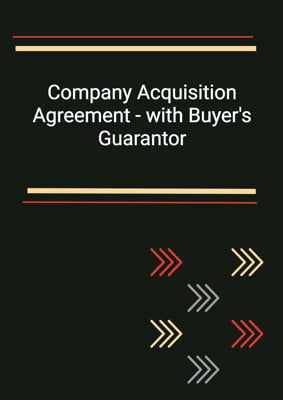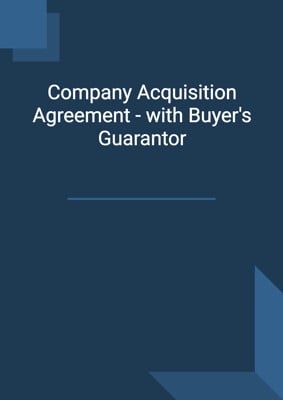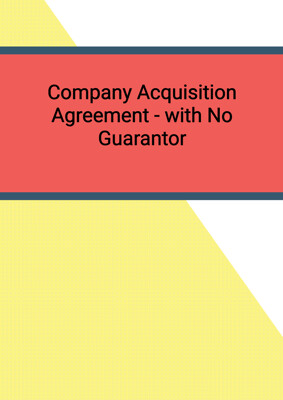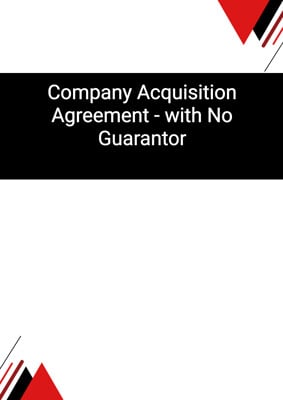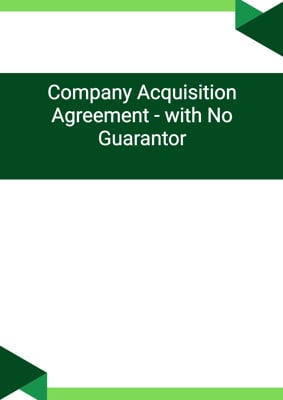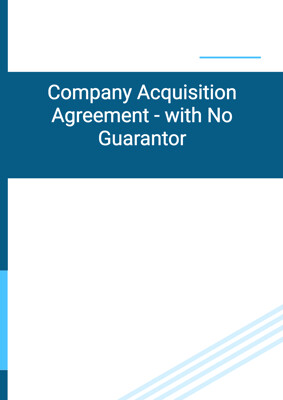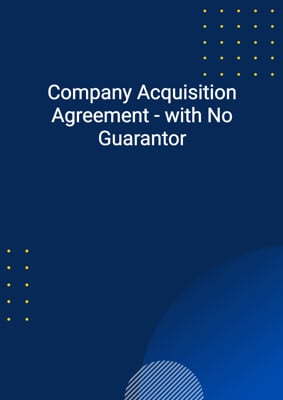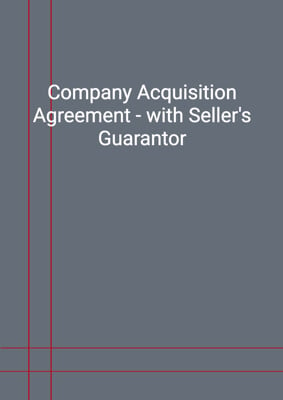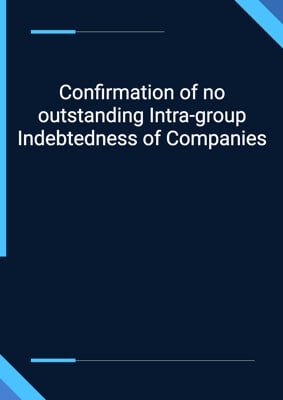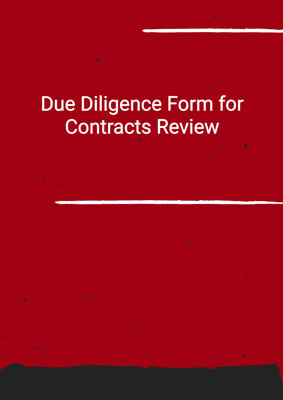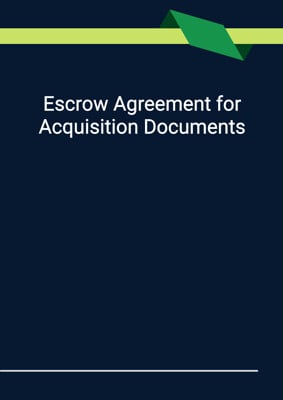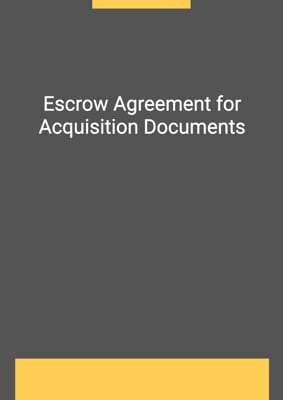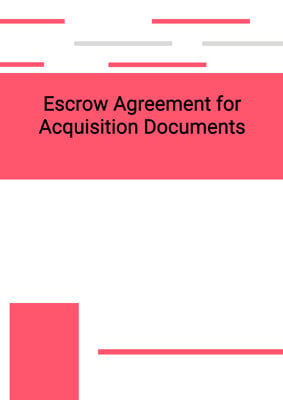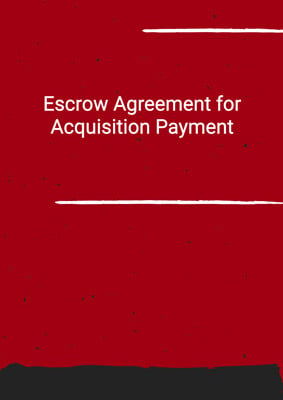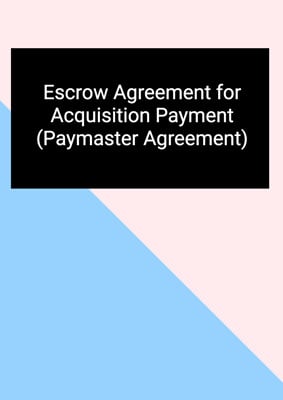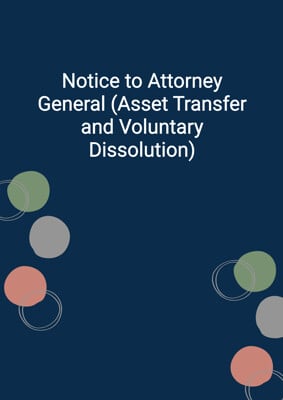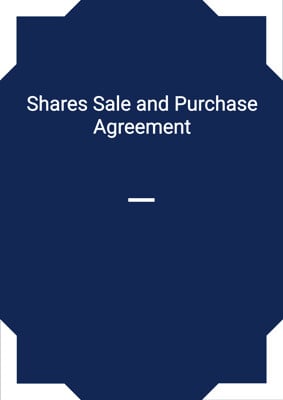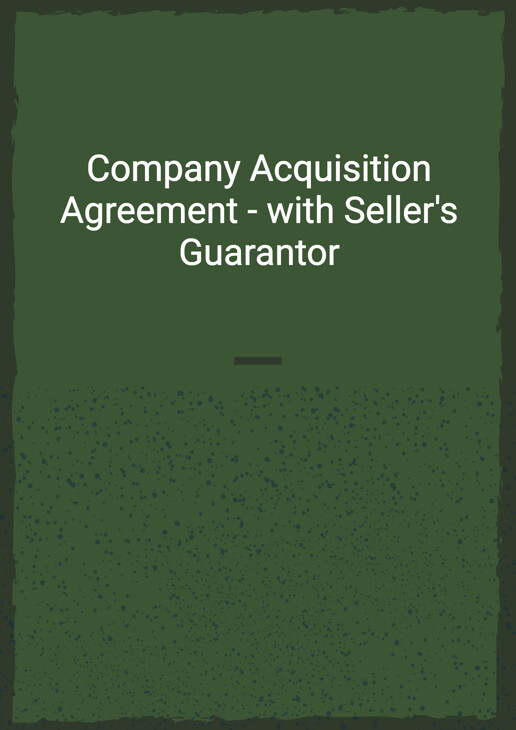
Company Acquisition Agreement - with Seller's Guarantor
Buyer Form - 2 Sellers
A company acquisition agreement between a Buyer and 2 Sellers with the Sellers' parent guaranteeing the obligations. The Sellers' warranties are included in another template. This agreement is drafted in favour of the Buyer.
How to Tailor the Document for Your Need?
01
Create Document
Fill in the details of the parties. You can click the "Fill with Member’s Information" button to complete it with information saved to your account.
02
Fill Information
Please fill in any additional information by following the step-by-step guide on the left hand side of the preview document and click the "Next" button.
03
Get Document
When you are done, click the "Get Document" button and you can download the document in Word or PDF format.
04
Review Document
Please get all parties to review the document carefully and make any final modifications to ensure that the details are correct before signing the document.
Document Preview
Document Description
The Company Acquisition Agreement - with Seller's Guarantor is a legal document that outlines the terms and conditions of the acquisition of a company. The agreement is entered into between the sellers, the buyer, and the guarantor. The sellers are the legal and beneficial owners of the share capital of the company, and they agree to sell all of the issued share capital to the buyer. The guarantor has agreed to guarantee the performance of the sellers' obligations under the agreement.
The agreement is divided into several sections, each addressing different aspects of the acquisition. The interpretation section defines the terms used in the agreement. The sale of the shares and the price section outlines the terms of the sale, including the number of shares to be sold, the price payable by the buyer, and the payment terms.
The conditions to completion section sets out the conditions that must be fulfilled before the sale and purchase of the shares can be completed. These conditions include the passing of a resolution by the shareholders of the sellers approving the transaction, the delivery of written consents from certain persons consenting to the sale and purchase, and the repayment of any outstanding intra-group indebtedness.
The completion section specifies the actions to be taken on completion, including the delivery of share transfers, share certificates, and other relevant documents. It also addresses the payment of the price and the allocation of consideration shares, if applicable.
The pre-completion undertakings section sets out the obligations of the sellers prior to completion, including conducting the business in the ordinary course, preserving and protecting the business assets, and providing access to books and records.
The post-completion undertakings section outlines the sellers' obligations following completion, such as repaying connected trading indebtedness, obtaining the release of any connected guarantees, and providing transitional services to the group.
The restrictions on the sellers section imposes restrictions on the sellers, preventing them from engaging in competing businesses or soliciting employees of the group companies.
The warranties section contains the representations and warranties made by the sellers to the buyer. The sellers undertake to indemnify the buyer for any breach of these warranties.
The limitations on claims section sets out the limitations on the buyer's claims for breach of warranty, including the requirement to give notice of any claim and the retention of a portion of the purchase price to meet possible warranty claims.
The buyer's rights to terminate section gives the buyer the right to terminate the agreement in certain circumstances, such as a breach by the sellers or a material adverse change in the business.
The withholding tax and grossing up section addresses the payment of sums under the agreement and the grossing up of payments to account for any required deductions or withholdings.
The entire agreement section confirms that the agreement and the disclosure letter set out the entire agreement between the parties and supersedes any prior agreements or arrangements.
The variation section states that any variation of the agreement must be in writing and signed by all parties.
The assignment section allows for the assignment of rights under the agreement by the buyer and the sellers, subject to certain conditions.
The announcements section requires the parties to obtain approval before making any announcements or disclosures regarding the agreement.
The costs section provides that each party will bear its own costs in connection with the agreement, except for certain specified costs.
The severability section states that if any provision of the agreement is held to be invalid or unenforceable, it will be deemed not to be included in the agreement, but the remaining provisions will remain in full force and effect.
The governing law and jurisdiction section specifies that the agreement is governed by the laws of the relevant jurisdiction and any disputes will be subject to the jurisdiction of the relevant courts.
The notices and service section sets out the requirements for giving notice under the agreement, including the methods of service and the addresses for each party.
The schedule section contains additional information and details relevant to the agreement, such as the details of the company and its subsidiaries, the maximum liability under warranties, the pension scheme, and any specific accounting policies or methods to be followed in preparing the completion accounts.
How to use this document?
1. Provide information: Enter the names and addresses of the sellers, the guarantor, and the buyer. Include their principal place of business to clearly identify the parties involved.
2. Specify the sale and price: Clearly state the number of shares to be sold and the agreed price. Include the payment terms to ensure both parties are aware of the expectations and deadlines.
3. Fulfill conditions to completion: Ensure that all conditions specified in the agreement are met before completing the sale and purchase of the shares. This may include obtaining shareholder approval, written consents, and repayment of any outstanding debts.
4. Complete the sale: On completion, deliver the necessary documents, such as share transfers and certificates, to transfer ownership of the shares. Make the agreed payment, either in cash or consideration shares, according to the terms of the agreement.
5. Fulfill pre-completion undertakings: Prior to completion, the sellers must conduct the business in the ordinary course, protect the business assets, and provide access to relevant records.
6. Fulfill post-completion undertakings: After completion, the sellers must repay any connected trading indebtedness, obtain the release of any connected guarantees, and provide transitional services to the group if required.
7. Adhere to restrictions: The sellers must comply with the restrictions outlined in the agreement, such as refraining from engaging in competing businesses or soliciting employees of the group companies.
8. Honor warranties: The sellers must fulfill the representations and warranties made in the agreement. In case of breach, they are obligated to indemnify the buyer.
9. Limit claims: The buyer must give notice of any claims for breach of warranty and retain a portion of the purchase price to meet possible warranty claims.
10. Terminate if necessary: The buyer has the right to terminate the agreement in certain circumstances, such as a breach by the sellers or a material adverse change in the business.
11. Account for taxes: Ensure that all payments made under the agreement comply with tax regulations and account for any required deductions or withholdings.
12. Comply with the entire agreement: The agreement and the disclosure letter constitute the entire agreement between the parties, superseding any prior agreements or arrangements.
13. Follow the specified procedures: Adhere to the specified procedures for variation, assignment, announcements, costs, severability, governing law, jurisdiction, notices, and service.
14. Consult the schedules: Refer to the schedules for additional information and details relevant to the agreement, such as the company and its subsidiaries, the maximum liability under warranties, the pension scheme, and any specific accounting policies or methods to be followed in preparing the completion accounts.
Not the right document?
Don’t worry, we have thousands of documents for you to choose from:
